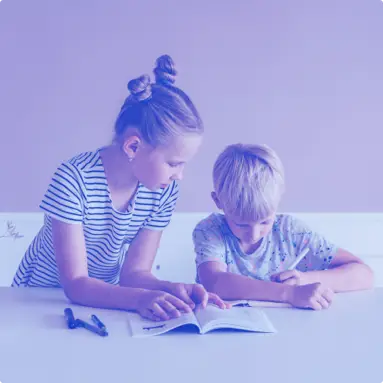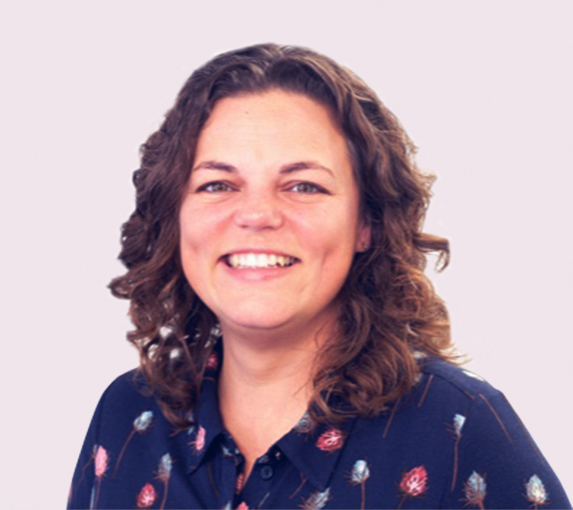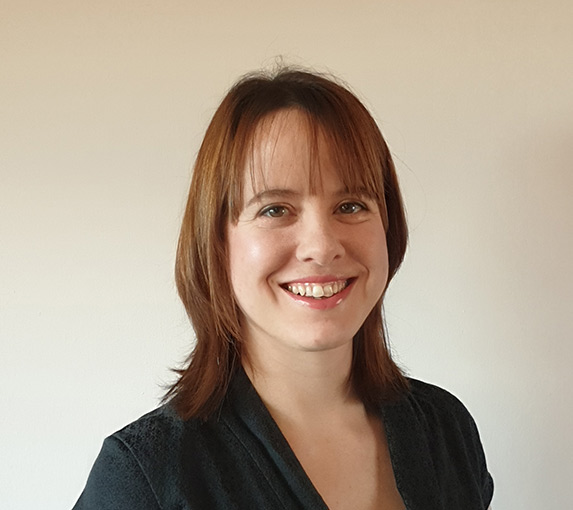
Episode 49: Learning through storytelling
Totem Poles, Oysters in June, and more. In this episode, Andy, Emily and Adam are joined again by Fiona Smith - Product Manager at Maths — No Problem! to discuss the impact of learning through storytelling. Do we need to hear more maths storytelling in class? Does it already exist through explorative learning on the carpet listening to the teacher? Plus, hear about the amazing life and work of Alan Hermanson.
More Podcasts on Education
Continue listening to our educational experts
Meet your instructors
The school of school podcast is presented by:

Andy Psarianos
@andy_psarianos

Emily Guille-Marrett
@EmilyEatsBooks

Adam Gifford
Special guest instructor

Fiona Smith
Never miss an episode
Subscribe to get the latest The School of School podcasts delivered to your inbox.
Podcast Transcription
Andy Psarianos
Hi, I'm Andy Psarianos.
Emily Guille-Marrett
Hello, I'm Emily Guille-Marrett.
Adam Gifford
Hi, I'm Adam Gifford.
Introduction
This is the School of School Podcast. Welcome to the School of School Podcast.
Sponsor
Are you a maths teacher looking for a primary school assessment tool that can give you a detailed look into learner or class achievement? With Insights, it's all in one place. Make sense of assessment data so you can strategically plan and teach lessons. Insights, it's assessment for advancement. Visit mathsnoproblem.com/insights for more information.
Emily Guille-Marrett
Hello everyone, and welcome back to another School of School Podcast. I'm Emily, and I've got Adam and Andy as usual. But, today we are joined with a special guest, Fiona Smith. Hello, Fiona.
Fiona Smith
Hello.
Emily Guille-Marrett
I wondered if you could start by introducing yourself.
Fiona Smith
Of course, I'm a product manager at Maths No Problem, and I have got lots of experience with education publishing in the past, ranging from such things as assessment, to even ELT. Ah, you weren't expecting that. So, I've definitely been around the block in a positive way.
Adam Gifford
What's ELT, Fiona, can you tell us?
Fiona Smith
Ah, yes.
Adam Gifford
Just in case. I'm thinking up all sorts of things. I'm thinking, "Oh, it could be this. Oh, Fiona could be an expert in this."
Fiona Smith
Whatever it is, Fiona's an expert in it. Yes. It's English Language Teaching, which is-
Adam Gifford
Thank you.
Fiona Smith
... quite far from primary maths, but there's a lot of relevant stuff in there.
Emily Guille-Marrett
There is indeed.
Fiona Smith
And, I think I bring it all.
Emily Guille-Marrett
Bring it all. There is indeed.
Andy Psarianos
We should have a competition. We should have a competition, who knows the most acronyms.
Fiona Smith
Oh, I'd be a contender.
Emily Guille-Marrett
I'm in.
Adam Gifford
But also, not only that. If you Google ELT, which ones we could attribute-
Andy Psarianos
Yeah, exactly.
Emily Guille-Marrett
Extra terrestrial life.
Fiona Smith
Extra tiny legs.
Emily Guille-Marrett
Extra tiny legs.
Andy Psarianos
Or, extra legs tiny.
Emily Guille-Marrett
Yeah. I love it. Well, today from ELT, actually there is a little segue into today's session, Fiona, arguably a little more than usual. Because yes it is, we are talking maths, but we are talking about learning through storytelling. One thing, I didn't do my homework before the session. Andy and Adam, in doing the learning through storytelling, are we talking about storytelling, we are talking about books, aren't we? Stories, story books, through storytelling, in that sense of the word, am I right?
Adam Gifford
Well, I don't know. I was going to come at it from another angle as well.
Emily Guille-Marrett
Okay. See, I just knew the word storytelling, I hadn't defined it. So Adam, tell me what we're doing today.
Adam Gifford
Well, I've got no idea what we're doing today. I don't know, but I think learning through storytelling. But no, what immediately jumps into my head? I'm from New Zealand hence my funny vowel sounds, and I think of Maori culture in New Zealand. Generation upon generation upon generation of learning has been passed down through storytelling. They didn't write things down. That's the first thing that jumps into my head-
Emily Guille-Marrett
Let's start there.
Adam Gifford
... and just very very quickly made a mind that's, oh, that's too long to say. But anyway, he's looking at indigenous science around the world and just how accurate it is and how incredible it is. And, that has been passed down through storytelling, and it's kept people alive. It's made people not live by places that are affected by tsunamis and earthquakes and all of these things in New Zealand that these finding in this research is massive. It's through telling stories, it's magnificent and it's wonderful, and I love it.
Emily Guille-Marrett
I think that's the art of oral storytelling and bringing people into that space. That joining in and using that vehicle of storytelling in the way that you've just described, where there were elements to join in, and as you say, passing down to generation to generation. Definitely, I think is in a heart of a strong primary school, doing that learning through that storytelling is really powerful. Fiona, you are nodding.
Fiona Smith
Yeah. Well, I'm nodding because I feel very strong about this. I think you can even take it wider and say that, that's about the power of informal learning, which again, directly links to that early learning space, the idea of learning through the world, through everyday experiences, and playing, playtime and interactions. That can come right back to sitting on the mat, listening to the stories at story time. It's a way of communicating so much. They're learning so much from what they're hearing in that little sitting down session with a story book, it's powerful.
Andy Psarianos
People follow narratives. They follow narratives. Random facts are uninteresting. I don't know, I'm sure people have done research on this, but you're more likely to remember things if there's a narrative attached to it, there's a purpose, there's a meaning, there's something to learn a moral, an end result or whatever the case maybe. You're more likely to pick up these points than if someone just tells you, if someone just says to you know, I don't know, "Never eat oysters in the month of June." What's the likelihood you're going to remember that on its own. But, if someone says, "One time, I had some oysters, it was June, I should have known better, oh my God, was I sick," blah, blah, blah, blah.
Maybe that's a pretty rudimentary, silly example, but it's more profound. It's more profound, because you're attaching some other form of meaning. A lot of this has to do with how people remember things. I'm not a psychologist, not even well educated in anything really, other than just pupil of life. There's people who talk about how your brain remembers things. It very rarely just remembers random facts in isolation. There's this notion, there's this emotive element to memory. When you remember something, you remember the emotions that you're experiencing with that thing at the same time, together. They're all tied together. It's not just the fact, but it's all the emotions that are attached to it.
That's why you'll have these experiences sometimes when you'll go, you hear a song and it brings you right back to the summer of 1992, or you had that first smell of spring, and it just brought you back to when you were six years old, riding your bicycle on the street. They're emotive memories. Your memories are tied with the story. Stories have emotions, they have feelings, and they have purpose and lessons. I think there's something to that. I think lessons is, teaching through stories is profound. Profound, there's the word of the day.
Adam Gifford
Well, let me jump in off the back of that, because Andy what you're saying, I think we can all agree with. Because, there's stories that have been told to us that will stick in our memory. Is it underutilised?
Andy Psarianos
Yeah.
Adam Gifford
Because, I--
Andy Psarianos
Secret weapon.
Adam Gifford
... this all the time. If you go on to, at what point does storytelling just seem to drop off the approach to education? It disappears. It's a little luxury, if you're lucky we'll read a couple of pages. What's happened, where's it all gone wrong?
Andy Psarianos
The challenge is, we've got, you and me, we have to figure out how we can teach the times tables through a story. That's our challenge.
Adam Gifford
Yeah. All right, we'll have to give it some thought. But genuinely, listen, people shared stories. Think of the explorers, think of everyone, how did they get funding? Yes, there was riches and all that, but they had to bring stories back. Everyone has shared stories for so, so long, and it's the stories that, just as you've been saying, Andy. I'm genuinely baffled as I sit here, what's happened?
Emily Guille-Marrett
Well, you're right. Because if you think about it, Adam. Historically, with traditional tales and folk tales, stories were there to keep people safe, children safe, potentially. There was the whole moralistic stories at the time to stop boys and girls from behaving in different ways because it wasn't appropriate. We've got all sorts of different stories. But, there is news, Adam, and I'm sure you've seen it, that there are schools who are starting to embrace storytelling more. But I do notice it, I have to be honest. I do notice it more in the early years in key stage one, and I think it should go all the way through education. You see things with The Three Little Pigs and some amazing work around science. When you think about the House of Straw and The House of Bricks, and we're looking at different materials and how they're being used, and the concept of three, and all of that. But, we need more, Adam. Fiona, speak.
Fiona Smith
I'm going to be controversial because I think storytelling, in some ways, has adapted. What you are saying, Andy, about the use of, how we remember things. I mean, this is ironic because I can't remember the name of the webinar, presentation or the man who was telling me about this, but I can remember the detail of what he was saying-
Emily Guille-Marrett
That's storytelling.
Fiona Smith
... and how... That's storytelling. I can remember talking about it in the car journey. But anyway, storytelling has changed in the, when we used to teach and we used to develop teaching materials that were blocks of text, we know now that doesn't work, or it works but there are more effective ways of doing it. When we put something on the page of a textbook, and we put text here, we put an image here, we put something else that's going to help reinforce that, and we put that here, all of that creates a picture. That creates a story that supports that learning, supports that memory. I can think back to a really powerful page in a book, what that looked like in the picture and even room that you are in when you learn that, when you read that. So, I think storytelling is playing its part, but it's playing its part through the materials that we're using now, the visual.
Emily Guille-Marrett
Come on, come on, that's got to bring us into something we've all been working on. Oh please, can we talk about it?
Andy Psarianos
Yeah. Go on. What have we been working on, again? I can't remember.
Emily Guille-Marrett
You can't remember? We've been-
Andy Psarianos
Tell us a story.
Emily Guille-Marrett
Tell us a story. Once upon a time, there was a publisher... No, seriously, we have been, as a team and a whole lot of people at Maths No Problem, people on this call and beyond, have been working on some gorgeous picture books, four picture books. James Hermanson...so many years ago, is it fair to say, Andy, this was your there's a lovely family story behind the stories, which was your late father-in-law had written stories for his children. They're beautiful little rhyming stories and there's a whole range of them. There's a whole session I think we need to do on these picture books for another time, we can save that and it would be great to get some of the team who worked on those on the podcast. Ban Har, who I think a lot of people who listen to the podcast would know Ban Har, particularly with their interest in maths mastery. He's worked with the company for many years.
Maths mastery expert put together these amazing illustration briefs. Then, they worked to these beautiful texts of which Fiona, there are four. We can talk about the titles in a second. Putting those together to really help children to learn mathematical concepts through story, and actually, Fiona, linking to what you were saying with the images on the page and the text, the sound and rhythm of the story, the opportunities to look deeply into those illustrations, attractive or engaging ones to draw them in. That's how we are hoping that we're going to really start to engage young kids when they enter the world into the earliest classroom, into reception, to, I guess, have their first steps into learning maths through story. So, Fiona, please tell us a little bit those, there's four titles.
Fiona Smith
I'll start with my absolute favourite, and I hope it's okay to have favourites, but that's Playmates. He tells the story of a little set of chums who want to purchase a goblin. That's my favourite, completely. We have Rosy Red, which is about a little rabbit who goes looking for chocolate, and again, I can relate to that. We have This 'n That, which is about a cat and a dog, and they fight like siblings should, but they also love each other very much. Last one, Andy, I think you should talk about.
Andy Psarianos
Fiona Smith
The Magic Oven, which is about cooking, and I know nothing so that's why I passed it over.
Emily Guille-Marrett
I think that's my favourite. Go on Andy, tell us about your journey with these picture books, because it's been a long and special project, I think.
Andy Psarianos
Right. I was fortunate in the sense that I knew James Allan Hermanson, the author, he's my father-in-law effectively. He is one of these people who... Oh, geez, I don't know how to describe him. You only meet maybe one or two people like this in your life, who just have a way with words, a wit and a natural poetry. They see the story in everything. They write songs because they love it. They write stories because they just passion, they can't not do it. It's just, they have to do it, they're so compelled.
He was a very complex character. I mean, he had me laughing all the time. Anyway, when his kids were growing up, one of the ways that he chose to communicate and have a relationship with them was through these stories. He would take the stories, they would normally arise from a conversation, something the kids were doing, a game they were playing or something, he took them then he wrote this beautiful poetry around it. There's actually, we've chosen four to launch this product line with, which is an early years product line, but there are hundreds of these stories and I just can't wait.
Emily Guille-Marrett
Can we announce that there might be more, Andy?
Andy Psarianos
Sure, absolutely.
Emily Guille-Marrett
Because, Fiona and I want to put you under pressure because we want more.
Andy Psarianos
There's things that are volumes, big. There's stories that are big and there's just little poetry stories, there's all kinds of stuff. The other interesting thing about James Allen Hermanson was that, when his kids grew up, he started volunteering at the local hospital, BC Children's Hospital, here in Vancouver, which is where he lived. Right up till the day that he really couldn't do it anymore, until he was too sick to do it, he would go every Saturday, including Christmas day if Saturday was a Christmas day, he went every, never missed a Saturday ever, and talk to the kids, usually those who critically ill and wrote poetry, personal stories and poetry for those kids. Did it for decades. I have all this volume of stuff, it's just magical. What a talent, what a skill.
Adam Gifford
So, he always wrote it down, did he, Andy? Did he always-
Andy Psarianos
Always.
Adam Gifford
Okay. That's magic. It wasn't just... Not just at all, but telling stories, but he actually, he wrote them all down.
Andy Psarianos
Yeah. And, gave them to the kids. Not only gave them to the kids, but would go in and perform them for the kids. He was there, and he would every Saturday to all the kids, just tremendous life story. There's one person, very influential, who I've met in my life and I thought, wow, this person is amazing, I've got to do something with this, happened to be somewhat related to him. Then, there's Ban Har, who on the other side is this magical figure in education. This is like he's the Messiah.
As far as I'm concerned, so many people follow Banhar because he has a clarity that any situation, he just, he understands the theories, he understands the practises, he understands the classroom realities, he understands it all. He has experience in all. He's just one of these people who can see the way through things. Then, this is a marriage of the two. I mean, I'm so proud of these books. I can't wait. They're actually going to be out next week in the schools.
Emily Guille-Marrett
I know.
Andy Psarianos
I'm so excited about these.
Emily Guille-Marrett
We're super excited. It's amazing.
Fiona Smith
They are wonderful, and your father-in-law sounds wonderful as well. I think one of the reasons why I chime so much with these picture books is that, I can remember the stupid little stories that my dad told me about Egbert, who lived in a tree on the school field. I think that... So, it's true. I mean, I didn't learn anything from Egbert, but the concept behind it of, we remember those experiences and they mean so much, seeing them then put on the page, knowing that I would've loved them when I was tiny, and the children are going to love them as well. Giving them that extra depth of these amazing illustrations that have so much depth to them. They're just wonderful.
Andy Psarianos
I hope it comes out in this, but I don't know how much, if people really recognise how hard we work, not just us, but people who do things. How much effort we put into trying to produce these things and make them really special. So much love goes into it, so much care. It's much more than, we're not just showing up and doing our jobs. I remember saying it, very clearly saying it to Adam. I said it yesterday at another meeting, and I'll say it again, this organisation that we work for, I mean for me, when I look back and say, "If I could sum it up, what is it that we're trying to do for the people that work in the organisation?"
And in the end, the most important thing for me is that, when people one day reflect back on the years that they spent working with us, with this team, this talented group of people, they look back and they say, "Yeah, that's when I did my best work." That, to me, is the most important thing in this whole organisation, for the people. This is one of those products that I think we're always going to look back and say, "Yeah, I'm really proud of that."
Emily Guille-Marrett
I do genuinely believe that it's a groundbreaking concept. Because, maths through stories is a very... There's a whole lot of research behind that, at taking picture books then the stories, using them to tell stories and find maths to talk with the children, is out there. But, I think that what you described as the magic and the marriage of these lovely stories that you can read and tell, they're rhyming and they're engaging. Some of the phrases, the kids are going to learn because of that, because they're fun stories. But, to have that Banhar touch, and to then actually, you're not just saying, "Oh, learn about the number 10 in this lovely picture book, where you're going to go, one duck, two." It's not like that, it's a wonderful story. We've actually, in the images, the richness of things you could do across a whole year, various points jumping in and out, is amazing because Ban Har has taken another lens on it. The way that the artwork is-
Andy Psarianos
Interpreted by the artists. The artists, and we didn't talk about that, but the artists bring their flair to it. That's another thing about storytelling too, is the art. And, not to just go in a completely different direction, but I've had the benefit of spending a little bit of time with a very talented indigenous artist here on the West Coast of North America, BC, a guy called Roy Henry Vickers. Actually, he's probably the best, the most well known artist, first nations artist on the West Coast. He's done everything from unbelievable beautiful artwork like paintings, and digital paintings as well, because he works on a computer a lot of the time, as well as carving out totem poles out of trees. He used to work off this little beach house in Tofino on the island of Vancouver.
Tofino is a really rugged place. I mean, it's a place where wolves come out and attack dogs that are walking along the beach. It's really rugged. It's about as close to nature as you can get. He lived there and carved on the beach, carved totem poles out of trees that were 500 years old, that had fallen. It's just amazing, but there's, and a lot of people don't know this, but a totem pole tells a story. It's a story. The indigenous people of North America, they see things in a different way everything is a story and everything ties into a story, just how they describe things. So, I don't know, they have such an interesting way of looking at the world. It's quite different than the Western view.
I don't think we spend enough the time at actually paying attention, because there's a lot and there's a richness and a depth that we miss out on of mysticism, storytelling and almost magical qualities. They talk about things in metaphors all the time. There's no real direct, it's very rare that they say, "This and this and this and this and this," but they just, the way they describe things, one of the things that stuck out for me was, they call killer whales or orcas, their word is sea wolves, so they make this relationship between wolves who are in packs and live in a social, but it's not a negative connotation for them, the wolves have this representation of collaboration, intelligence and sophistication, and that the orcas are the sea equivalent of that.
They tie their stories in with the magical qualities that these things have. It all comes out in paintings. This is how they communicate to each other, and these are the stories that they tell, and it's such a shame that this stuff is disappearing at the rate that it's disappearing at. So I need to find a way to tap into this because I think we got to make sure we don't lose that. Going back to the storytelling, storytelling happens at many different levels. It's not just books, it's not just reading, it's not just telling the stories, it happens everywhere. In education, other than the obvious things, what role can storytelling play?
Emily Guille-Marrett
I just really, I remember, Andy, you talked about, do any of us remember times when we were in reception? I still remember Eric Carles, The Hungry Caterpillar, which might seem like a copout because now that's this big anniversary book and everybody knows it, but for me, it genuinely did touch my heart. I totally like the excitement when Mrs. K got out The Very Hungry Caterpillar and there's a hole in the book, so you can actually stick your finger through, and each time it was read, it would be someone else's turn to go up, and when it was your turn to put your finger through the hole, it was so exciting. I can remember the whole event, but I know that there were things that I was learning. I was learning about how a caterpillar turned into the cocoon then turned into this beautiful butterfly.
I learned about colours. I learned about counting, one apple, two pears, three strawberries, and the craziness as it was like, cake, and I learned about having fun. I think actually, I had a whole collective communal experience. There's no way that... People can't tell me that the power of a story, and having that moment, I've learned so much from that book. Now I've passed on that learning, I like to think when I read that, to other children. I think that the books that we've created together, that have been illustrated and have that magic of... You've like Ubered it up The Hungry Caterpillar, because we've got the genius of Ban Har. We've got this incredible voice of rhyming stories that are magical, that children are going to remember.
We've got these amazing, talented illustrators to interpret and work with these people and bring their talent to the story. I'm hoping that there's going to be a little Emily somewhere else or someone else who's going to remember that. When The Magic Oven, and it was their turn to... Even in the role play area, the first thing I would have to do would be to recreate The Magic Oven, it's got to be done. I want a cardboard box, I paint it up, and I definitely be doing it, and there'll be things to take out and throw around. I'm in there, I'm just cracking up already. I think that is what is going to happen, I really do. It makes me goose bumpy, it does.
Andy Psarianos
Yeah. It's so sad that Allan Hermanson doesn't get to see that. That would've made him so happy. Well, I think that's it guys. Thanks so much.
Closing
Thank you for joining us on the School of School Podcast.
More Podcasts on Education
Continue listening to our educational experts
